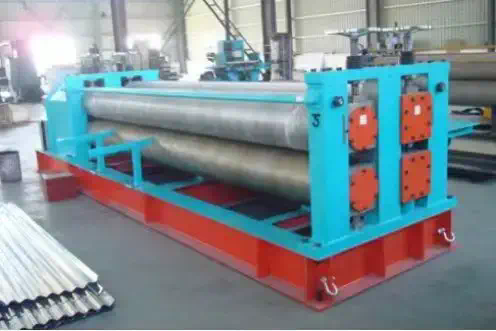In the realm of metalwork, technological advancements have always played a crucial role in shaping the industry. From traditional manual methods to automated machinery, the evolution of bending equipment has significantly improved productivity and accuracy in metal fabrication processes. This article delves into the latest innovations in bending equipment and their impact on the metalwork industry.

With the advent of computer numerical control (CNC) technology, bending machines have become more precise https://cnmtrollformingmachinery.com/vi/sea_containers_equipment/ roofing sheet production machine and efficient than ever before. CNC bending machines are equipped with advanced software that allows operators to program complex bending sequences with ease. These machines utilize servo-driven hydraulic systems to achieve high-speed and accurate bending operations.
One notable advancement in bending equipment is the introduction of multi-axis CNC press brakes. These machines feature multiple axes, including the X-axis for backgauge movement, the Y-axis for ram depth control, and the R-axis for crowning adjustment. With the ability to control multiple axes simultaneously, these press brakes can perform intricate bending operations, such as box bending and air bending, with exceptional precision.
Furthermore, the integration of artificial intelligence (AI) technology has revolutionized the way bending equipment operates. AI-powered bending machines can analyze real-time data and make adjustments on the fly to optimize the bending process. These machines can detect material inconsistencies, adjust bending parameters accordingly, and even predict potential defects in the finished product. As a result, manufacturers can achieve higher quality standards and reduce wastage significantly.
Another significant development in bending equipment is the incorporation of robotic automation. Robotic bending cells combine the capabilities of CNC press brakes with robotic arms, enabling seamless integration with upstream and downstream processes. These cells can handle various tasks, such as loading and unloading workpieces, tool changing, and even part sorting. The use of robotics in bending operations not only enhances productivity but also improves worker safety by eliminating repetitive manual tasks.
In addition to advancements in machinery, the introduction of new materials has also driven innovation in bending equipment. Traditional bending methods were often limited to conventional metals like steel and aluminum. However, the demand for lightweight and high-strength materials has led to the development of specialized bending machines capable of handling materials such as titanium, composites, and advanced alloys. These machines incorporate unique tooling and bending techniques to accommodate the specific properties of these materials.
The continuous evolution of bending equipment has also brought about improvements in bending tooling. Modern tooling systems are designed for quick setup and changeover, allowing manufacturers to switch between different bending applications seamlessly. Advanced tool designs, such as segmented tooling and adjustable V-dies, have also enhanced the versatility and efficiency of bending operations. With the right tooling, manufacturers can achieve consistent and precise bends across a wide range of geometries.
In conclusion, the advancements in bending equipment have transformed the metalwork industry, enabling manufacturers to achieve higher levels of precision, efficiency, and productivity. The integration of CNC technology, AI, robotics, and specialized tooling has revolutionized the way bending operations are carried out. As the industry continues to evolve, it is certain that further innovations in bending equipment will continue to shape the future of metal fabrication.
https://inorthshore.com/
